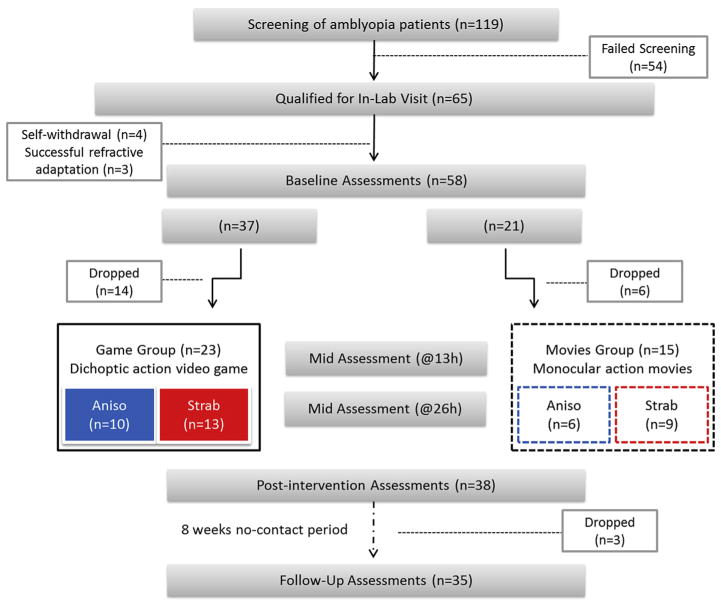Fig. 1.
General Study Design. 119 potential participants were screened for participation in the study. 54 failed screening for various reasons (e.g. resolved amblyopia, other pathologies present). The 65 participants that qualified for in-lab visit following screening (55% of screened) were scheduled to complete the study baseline assessment battery. Seven participants were subsequently excluded from the study: four could not make the required time commitment, while the other three no longer qualified after being given a refractive adaptation period (see text). Fifty-eight (n = 58) participants completed the baseline assessments, and were allocated into one of two intervention groups: game group (n = 37) or movies group (n = 21). 23 participants from the game group and 15 from the movies group completed a total of 40 h of intervention. During the intervention, visual acuity and stereoacuity only were assessed after 13 and 26 h of intervention (‘mid assessment’). At the completion of 40 h, participants repeated the complete assessment battery (‘post-intervention’). Following an 8-week period of no-contact, participants (n = 35) repeated the complete assessment battery a third time (‘follow up’). Abbreviations: Aniso: subjects with anisometropic amblyopia (no strabismus); Strab: subjects with strabismic amblyopia (both strabismic and mixed aetiologies are included).

